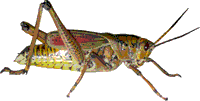Entomology Collections, General

Entomology Papers from Other Sources
Document Type
Article
Date of this Version
1998
Abstract
Highly erodible lands enrolled in the Conservation Reserve Program soon will revert to agricultural production. This study was designed to determine the effects of reversion of Conservation Reserve Program lands to wheat and livestock production on ground beetle assemblages. Reversion strategies included no reversion of Conservation Reserve Program grass (unmanaged bluestem), simulated grazing of Conservation Reserve Program grass (managed bluestem), minimum- tillage practices for wheat production, and no-tillage practices for wheat production. A randomized block experimental design was established with 4 replicates. More ground beetles were captured in pitfall traps in 1995 than in 1996, and abundances within years differed among reversion strategies. Of the 73 ground beetle species collected, 9 species accounted for 61.7% of total abundance. Abundances of these 9 species differed with respect to reversion strategy. Species diversity and evenness differed among the reversion strategies in 1995, but only evenness differed in 1996. Canonical correspondence analysis showed that annual and monthly variation were the predominant factors in separating ground beetle assemblages. Lack of rainfall may have accounted for a large portion of differences in abundances between years. A partial canonical correspondence analysis showed that simulated grazing and no-tillage wheat were the predominant reversion strategies in separating ground beetle assemblages. These treatments represent disturbance levels intermediate to unmanaged bluestem and minimum-tillage wheat.


Comments
Published in Environ. Entomol. 27(6): 1323-133.5 (1998).